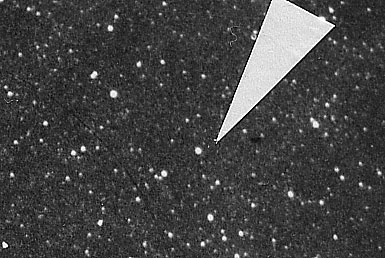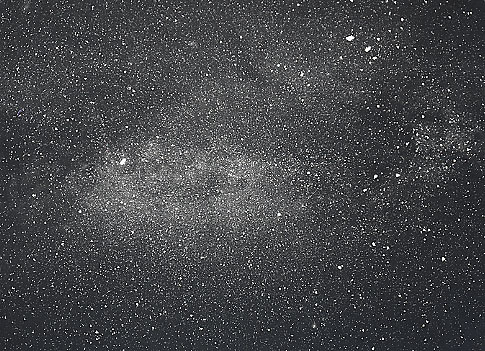Observation of Nova Sco 2005 and photograph of the Milky Way
Nova Sco 2005:
2005UT
July 26.45, magnitude 9.2, Bronica EC, 75mm f/2.8
July 27,45, magnitude 8.1, Epsilon 21cm f/3, TM400 film
It was completely clear tonight. I photographed the area
around Cygnus near the zenith. I searched the mid-altitude sky in the east
from 22.00 to 23.00. I often use a relatively large comet seeker for late-night
search, as the search area is quite far from the sun. However, the 9cm
comet seeker takes over for pre-dawn search.
The stars seen in the field of view of large binoculars are
small and sharp, probably because of relatively small aberrations. The
pair of binoculars I use was apparently designed with astronomical use
in mind and there is only slight degradation of the image caused by coma
at the edge of the field. The brightness of the image is superb. The coating
of the lenses must be excellent. M31 entered the field soon after I began
searching and a small neighboring galaxy at about 9.5 magnitude appeared
surprisingly large. M32 was small and good-looking. Then, a little uneasiness
crossed my mind: If a comet-like object such as these galaxies entered
the field, could I tell if it was a comet and determine its position as
quickly as I used to? More than 30 years have passed since my last discovery.
Naturally, I have lost all the intuition I had.
In comet search it is extremely difficult to determine the
object's right ascension and declination. I saw a box lying at my feet
and wondered what it would be. I recognized it was digital setting circles
designed just for that purpose. It is ironical that a handy device like
this is almost useless for old-fashioned observers like me. I will use
the old elementary but proven method of sighting the object as if aiming
a gun. There are countless sheets of drawing paper with a 5cm-diameter
circle drawn on them. I haven't used even one sheet. This method of comet
search hasn't improved since Messier's time.



